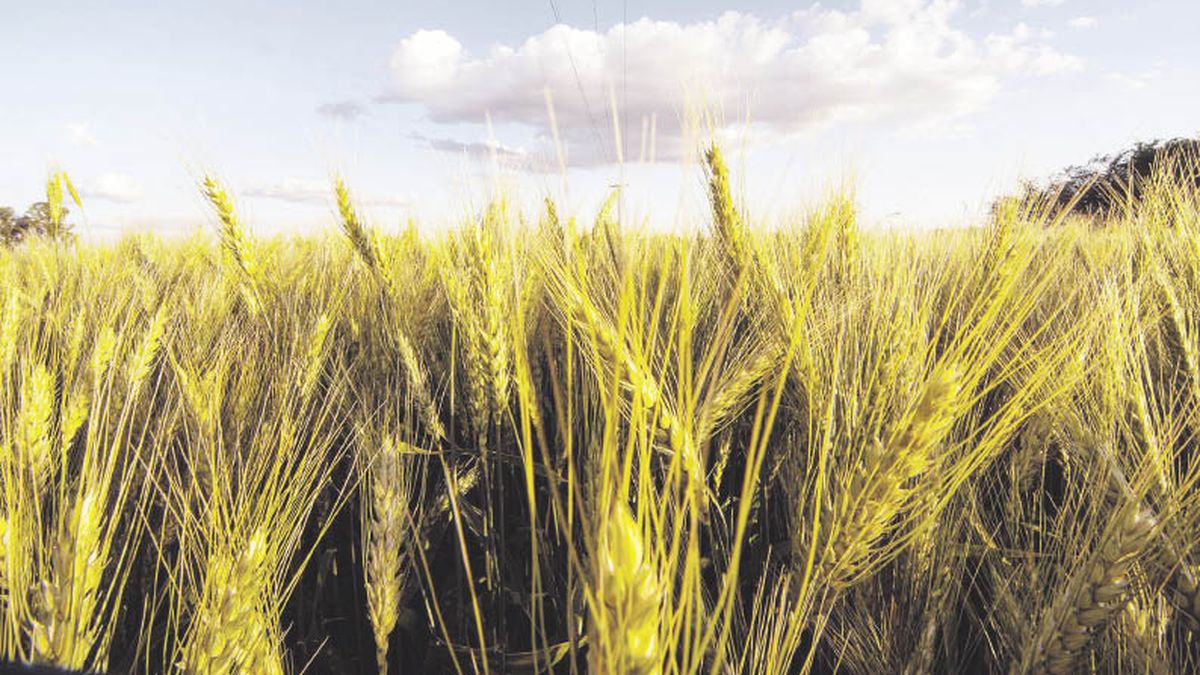As detailed by the producer who rents fields adjacent to said Buenos Aires town, “on May 25 the last important rain that allowed us to sow wheat occurred and from then on nothing else happened here. It would have to rain about 1,000 millimeters per year, but today we are, in November, barely 400 millimeters“.
“I work 600 hectares, all rented. In the wheat that we ‘burn’ (herbicide is sprayed on it to dry it) we had a cost of US$500 per hectare that were thrown away. To that must be added the rent, so for the soybeans that I am planting I need about 1,500 extra kilos to cover that expense. It will be a year to spend it with the least possible loss,” Ferrari said.
The core area is agricultural par excellence, which although it is not the one that contributes the most wheat at the national levelthe production losses that will occur in said region will be so forceful that the Rosario Stock Exchange (BCR) classified it as a “productive disaster”by stating that the drop in production will be 83%, going from 7.8 million tons to 1.6 million.
Upon entering the area, the “productive disaster” becomes palpable: yellow and dry wheat of small stature they paint the scene at the side of the roads, despite the fact that the shoulders are green for a few days thanks to the rains.
As you enter the rural roads and enter the fields, where tractors pulling seed drills abound to planting soybeans on the still standing wheatit can be appreciated ears with empty grainsfor which it is not worth starting the combines.
“What happened is terrible. something never seen and unprecedented for the area. In these fields there are always shallows or lagoons, but today they are all dry,” he told Télam Gustavo Frederkingwho calculated that in the area the production will be 15% of the volume that is usually harvested.
The bad state of the wheat is such that Frederking decided to start planting soybeans and he released cows in the lots and made rolls with the cereal. “It is a very tough decision, so much so that some producers are going to harvest it anyway, because in their heads they do not accept what is happening. We are not used to not having a harvest,” said the producer.
For edmund nolanproducer from the Venado Tuerto area, “It is somewhat desperate to see the wheat there. It is never good to lose an illusion. For us, the harvest was always a party, but today we can’t afford it.”
“For this reason, one is changing a reality that is that I am going to reap something that is not going to give me even to pay the person who is going to come to threshmuch minus seeds and fertilizer, for a planting above causing it to be lost. That situation is a wake,” Nolan lamented.
Despite the lack of humidity, the farmer remarked that the effects on the soil will not be the same that could have been four decades ago, thanks to the implementation of direct sowing.
“Yes I can say that a dry one of these before would have left us with zero results in everything. With the theme of direct sowing some things dim, the soil is taken care of and everything is not lost. If this happened 40 years ago, no one would be able to go through the route because we would be covered in a cloud of dust,” he concluded.
For his part, charles covertona producer in the area, maintained that neither he nor his father nor his grandfather saw “something like that. We know that something similar happened in 1915, more than 100 years ago.”
In addition, Covernton put numbers on the losses: “Due to the drought, 50% of the wheat in the Venado Tuerto area has already been lost, and it went from an expected yield of 50 qq/ha to 25 qq/ha. But the problem is that what It was going to yield 25 qq/ha, 80% was lost due to frost. I mean, 20% of what is sown will be harvested with half the yield”.
For his part, he President of the Rural Parchment Society, Jorge Josifovichhighlighted the seriousness of the drought and said that “although we have suffered quite strong droughts as in 2008 and 2017, This year we are experiencing a much more complex situation. This year we did not receive the average 900 millimeters of precipitation, but 300 millimeters and we had 180 days with frostwhich produced the perfect storm for winter crops to be wiped out.”
According to Josifovich, of the 30,000 hectares planted with cereal in the Pergamino areaone of the hardest hit points in the core area “less than a quarter will be harvested, which means less income for families, less work for carriers and less use of fuel, and contractors will work at cost, and all of this will spill over into the regional economy, initially, but later it will spill over into the national economy.”
Source: Ambito
David William is a talented author who has made a name for himself in the world of writing. He is a professional author who writes on a wide range of topics, from general interest to opinion news. David is currently working as a writer at 24 hours worlds where he brings his unique perspective and in-depth research to his articles, making them both informative and engaging.




